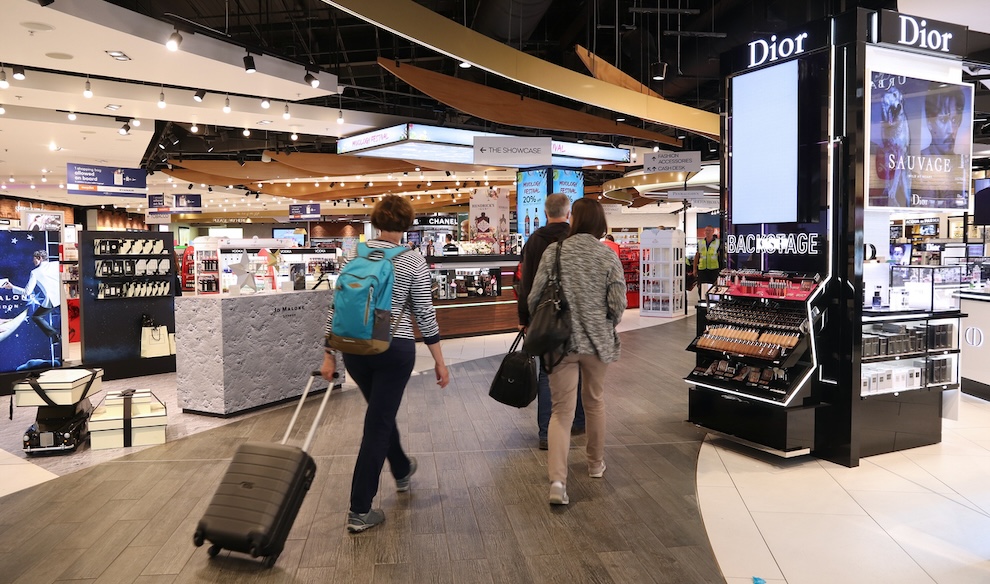Consumer behavior and travel retail
Editor’s note: Koen Philippaerts is new business development manager at EyeSee.
After visiting my family in Europe, I realized that the time I spent waiting on my flight changed my purchasing habits. In the duty-free zone I found myself wandering around a product category I am not usually interested in, eating lunch when I usually eat breakfast and purchasing some tech gadgets I did not intend to buy.
Conde Nast Traveler’s article says that people travel the skies, rails, roads and seas to tick off major bucket-list moments. Shifting behavioral patterns and traveling go hand in hand, and a big part of that is the travel retail centers we visit along the way. It is where every journey begins and ends; it is a necessity, but it is also important for travel retail to be convenient, pleasant and enjoyable.
Given this, does it come as a surprise that Statista predicts that the global travel retail market will reach 174.9 billion U.S. dollars by 2030?
How is travel retail different?
Travel retail centers are places where consumers are ready to try something new, and brands must be able to give their best and use the opportunity to introduce themselves to new customers, while also showing loyal customers that their favorite brand goes where they go.
A Statista survey shows that:
- 48% of travelers think that a variety of products makes duty free a great place for shopping.
- 47% of travelers say it is a great place to try new brands.
- 45% are more motivated to buy duty-free exclusives.
- 43% consider travel retailers a great place to buy gifts.

Not including beauty retailers, travel retailers are one of the main distribution channels in the beauty industry. The main categories travel retailers feature are perfume, cosmetics, liquor, confectionery, tobacco, electronics, accessories (bags, watches, eyewear, etc.), food and beverage.
When consumers enter the duty-free zone, in most cases, they have some free time on their hands before boarding starts. Nicely displayed brands will get anyone’s attention, and to be honest, probably some last-minute gift shopping will be done.
Unique display designs can help brands stand out in product displays. For example, Galvinet Whiskey displayed its bottle as a museum artifact. It was beautifully lit and covered with a protective glass box. All of this was in line with “tradition” as one of the brand’s core values and as Scotland’s oldest legal whiskey distillery: from the front of the liquor bottle display stand to the back of the product packaging, with XXXV (35 in Roman numerals) emphasized. Any Glenlivet enthusiast and collector would instantly know this means a rare bottle of liquor because it’s not in the brand’s collection.
Graphic solutions are not the only way to shed light on more information in places where people have extra time. Sometimes that can be shop assistants who engage in further conversation with consumers.
However, all of this is just the tip of the iceberg when it comes to possible brand touchpoints in travel-type environments. There are marketing opportunities: from airplane magazines, brochures and leaflets to much bigger ATL prints or on-screen ads. And purchases can be made on planes. The possibilities are endless!
What can we learn from travel retail?
There are many types of point of sales displays:
- Counter displays.
- Free-standing display units.
- Product displayed quickly units.
- Light boxes.
- Gravity feed display units.
The creative potential of these displays is limitless. Recall the enormous cardboard fence constructed from Kit Kat bars and the point-of-sale box brimming with an abundance of Kit Kats? Ideas like this work not only for travel retailers but also in supermarkets.
Over the last couple of years, the market research industry has seen a steady rise in online context testing solutions such as virtual stores, which offer cost-efficient and fast findings but also boast very high validity. Apart from providing stable results even in changed circumstances, virtual shopping has a very high correlation with real shopping behavior – as much as 0.8-0.9.
When brands leverage unconventional retail rules
Understanding consumer behavior in travel retail can serve as a compass for brands seeking growth. The unique environment of duty-free zones, characterized by ample free time and consumer openness, offers an exceptional opportunity for brands to engage and leave a lasting impression.
Brands that understand and leverage these unconventional retail rules stand to unlock untapped potential and navigate non-standard points of sale successfully. As the market research industry embraces virtual shopping solutions, the prospect of testing concepts and display designs becomes more efficient, cost-effective and aligned with real shopping behavior, emphasizing the importance of staying ahead in an evolving consumer landscape.
